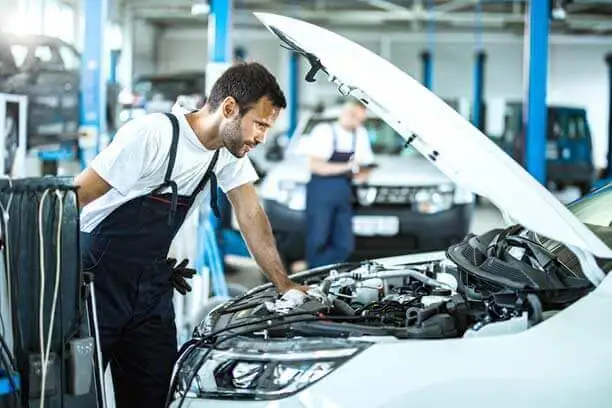Car maintenance is a crucial part of vehicle ownership. When your vehicle is well-maintained, you get better gas mileage, a smoother ride and fewer roadside breakdowns. Regular maintenance also extends the lifespan of your car by preventing major malfunctions. In some cases, failing to follow preventative auto maintenance guidelines could void the vehicle’s warranty. When it’s time to sell or trade in the vehicle, having detailed service records can also help boost its value.
Your Easy-to-Follow Auto Maintenance Checklist
Taking care of your car by performing preventative maintenance helps ensure you have safe and reliable transportation, but with the hustle and bustle of everyday life, it can be easy to forget about routine car maintenance tasks. In addition to the manufacturer’s maintenance recommendations found in your vehicle’s owner’s manual, this basic car maintenance checklist can help you stay on top of the small problems so they don’t turn into big problems.
ASAP
- Anytime your check engine light comes on, it’s time for a visit to the repair shop. A mechanic can run diagnostic tests to determine the cause. Don’t reset the check engine light on your own without knowing why it came on in the first place.
- If a headlight or taillight is out, replace the light and check for blown fuses right away. Driving with burned-out lights is unsafe and illegal.
- A car’s tire pressure monitoring system (TPMS) will alert you when the air pressure in a tire drops below a certain amount. Low air pressure can bring unsafe driving conditions, so inflate your tires to proper levels as soon as possible.
Monthly
- After your vehicle’s monthly scrub down, top off your windshield washer fluid so you don’t get caught on the road with no way to remove grime.
- Double-check your headlights, taillights and brake lights to make sure they’re in working order.
- Make sure your check engine light isn’t on. If it is, schedule a trip to the mechanic.
- Check your tire inflation, tread and condition. If you’ve reached the 50,000-mile mark on your tires, consider getting a new set.
Quarterly
Designate the months of January, April, July and October for performing your added quarterly maintenance. Don’t forget about your usual monthly cleaning and inspection during these months.
- Top off your car’s fluids, like the automatic transmission fluid and the power steering fluid.
- Inspect your car battery and the cables for signs of wear or corrosion.
- Check your owner’s manual to determine your vehicle’s recommended oil change schedule. But, regardless of the mileage or timeframe, check the oil quarterly.
- Inspect the belts, hoses, fuel filter and exhaust. If these things are out of your wheelhouse, ask your service center to check them for you when you head in for an oil change.
Twice a Year
When summer and winter roll around, you’ll have a few extra things to check in addition to your typical monthly and quarterly lists.
- Give your car a wax and seal to protect the finish and inspect your wiper blades for wear.
- Check your owner’s manual for your vehicle’s recommendation for changing the engine’s air filter. Even if it’s not time to change the filter per the manual, inspect it for grime and deterioration, which could lead to engine degradation.
- Check the chassis to see if it needs lubrication.
Every Year or 12,000 Miles
At the start of the new year, and in addition to the other items on your car maintenance checklist, include these add-ons.
- Check your brake system to make sure it is in good condition. For safety purposes, it’s best to get your brake pads, steering and suspension looked at by a professional.
- Replace your cabin air filter to make sure you’re breathing clean air while driving and to keep your air conditioner running smoothly.
- Top off your coolant/antifreeze.
- Check transmission fluid levels.
Now you’re set for another year!
Stay Protected
Vehicle maintenance is only one part of being a responsible car owner and safe driver. Contact your local Farm Bureau agent to make sure you have the auto insurance coverage you need to keep your car protected.

